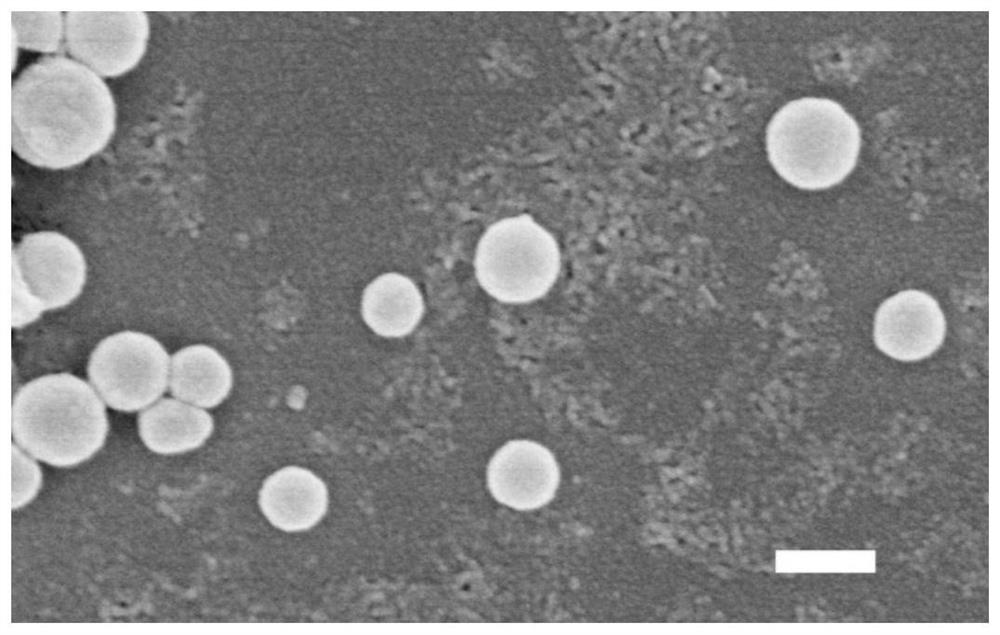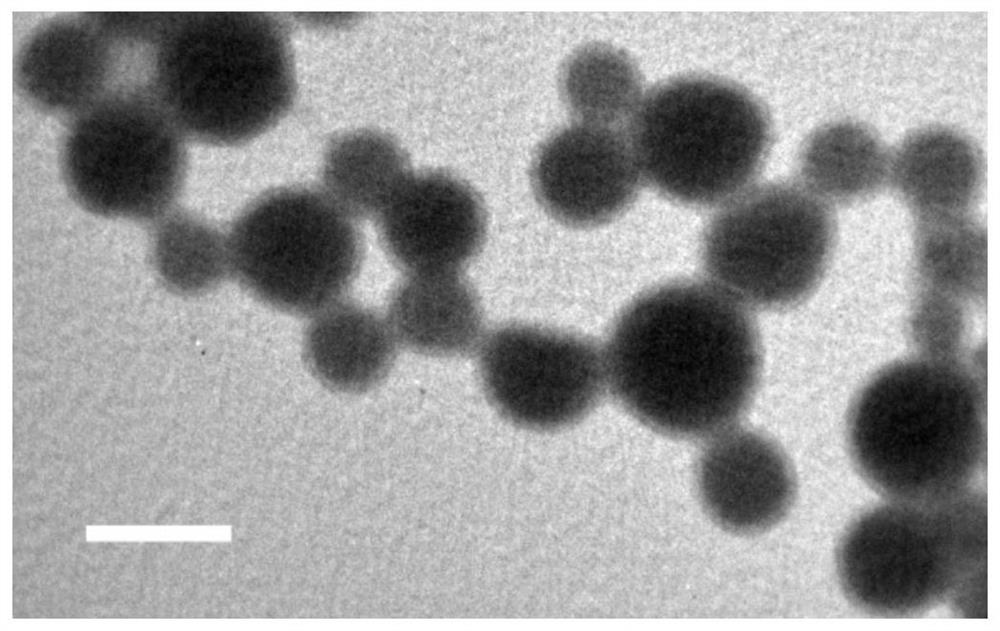Tumor microenvironment response type nanoparticle based on biomimetic engineering as well as preparation method and application thereof
A technology of tumor microenvironment and bionic engineering, which is applied in the field of tumor microenvironment-responsive nanoparticles and its preparation, can solve the problems that photothermal efficacy cannot be fully exerted, chelates cannot exist stably, etc., and achieve a wide range of acquisition channels Effect
- Summary
- Abstract
- Description
- Claims
- Application Information
AI Technical Summary
Problems solved by technology
Method used
Image
Examples
Embodiment 1
[0064] Embodiment 1: the preparation of PFTNPs
[0065] First, PpIX (protoporphyrin, 10 mg) was dissolved in 2 mL of methanol to obtain a PpIX methanol solution. Quickly add 200 μl PpIX methanol solution to deionized water (amount of 5-30ml, 20ml is used in this example), and under continuous ultrasonic treatment (ultrasonic power is 50-100W, 100W is used in this example), add 40 μl TA solution (40mg / mL) and 40μl FeCl 3 .6H 2 O (10 mg / mL), nanoparticles dispersed in the aqueous phase were obtained. Next, the nanoparticles were washed with deionized water and centrifuged at 10,000 rpm for 10 min, and then the nanoparticles were taken and neutralized with NaOH to obtain PFTNPs (ie, PpIX@FeIII / TA).
Embodiment 2
[0066] Embodiment 2: Preparation of MPFTNPs
[0067] 1. Synthesis of PFTNPs
[0068] Refer to Example 1 for the preparation process.
[0070] MDA-MB-231 human breast cancer cells were incubated at 37°C with 5% CO 2 The culture medium was high-glucose DMEM medium supplemented with 10% FBS (v / v) and 1% penicillin-streptomycin (v / v).
[0071] 3. Extraction of Cancer Cell Membranes
[0072] MDA-MB-231 cell membranes were extracted with a membrane protein extraction kit according to the instructions provided by Beyotime Biotechnology Company. Simply put, the collected 1×10 8 The cells were resuspended in 3ml membrane protein extract solution and 1mMPMSF was added. The cells were gently and fully suspended, and then incubated in an ice bath for 15 minutes. The MDA-MB-231 cell suspension was frozen at -80 °C and then thawed three times. The obtained suspension was centrifuged at 700 g for 10 min, and the supernatant was centrifuged at 4° C. (14...
experiment example 1
[0076] Experimental example 1: Cellular uptake performance of MPFTNPs
[0077] MDA-MB-231 cells, HepG2 cells and PANC-1 cells were seeded in glass confocal culture dishes overnight. The MPFTNP solution with a concentration of 40 μg / mL was added, the cells were incubated for 1 h, and then the cancer cells were washed three times with fresh DMEM medium, stained with DAPI for 10 min, and the cell uptake performance of MPFTNPs was observed under CLSM (LSM710, Carl-Zeiss, Germany). Experimental results such as Figure 6 As shown, it is proved that MPFTNP has strong targeting to MDA-MB-231 cells.
[0078] The cell uptake behavior was detected by flow cytometry (BD-FACSVantage SE, USA). Similar to the CLSM test method, MDA-MB-231 cells, PANC-1 cells and HepG2 cells were seeded in 6-well plates and incubated with MPFTNPs at a dose of 40 mg / mL. After culturing for 1 h, the cells were washed with DMEM medium and analyzed by flow cytometry. Experimental results such as Figure 7 As ...
PUM
 Login to View More
Login to View More Abstract
Description
Claims
Application Information
 Login to View More
Login to View More - R&D
- Intellectual Property
- Life Sciences
- Materials
- Tech Scout
- Unparalleled Data Quality
- Higher Quality Content
- 60% Fewer Hallucinations
Browse by: Latest US Patents, China's latest patents, Technical Efficacy Thesaurus, Application Domain, Technology Topic, Popular Technical Reports.
© 2025 PatSnap. All rights reserved.Legal|Privacy policy|Modern Slavery Act Transparency Statement|Sitemap|About US| Contact US: help@patsnap.com



